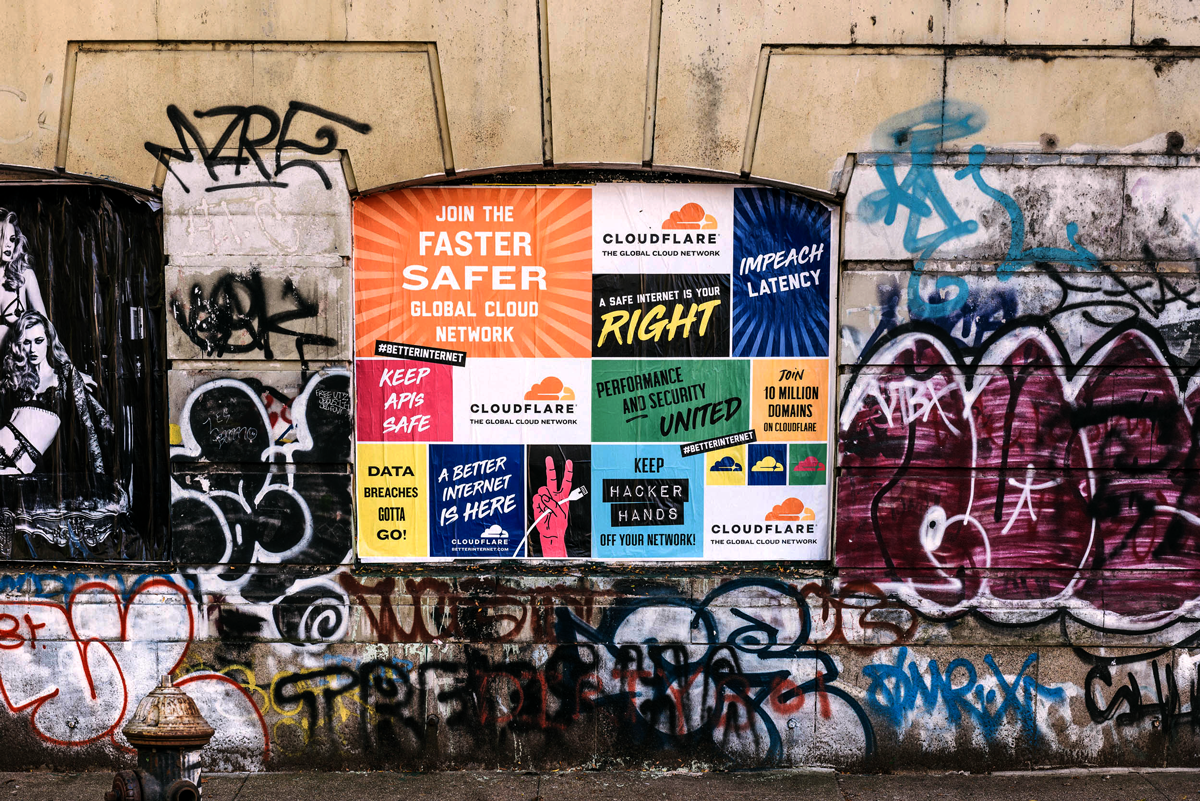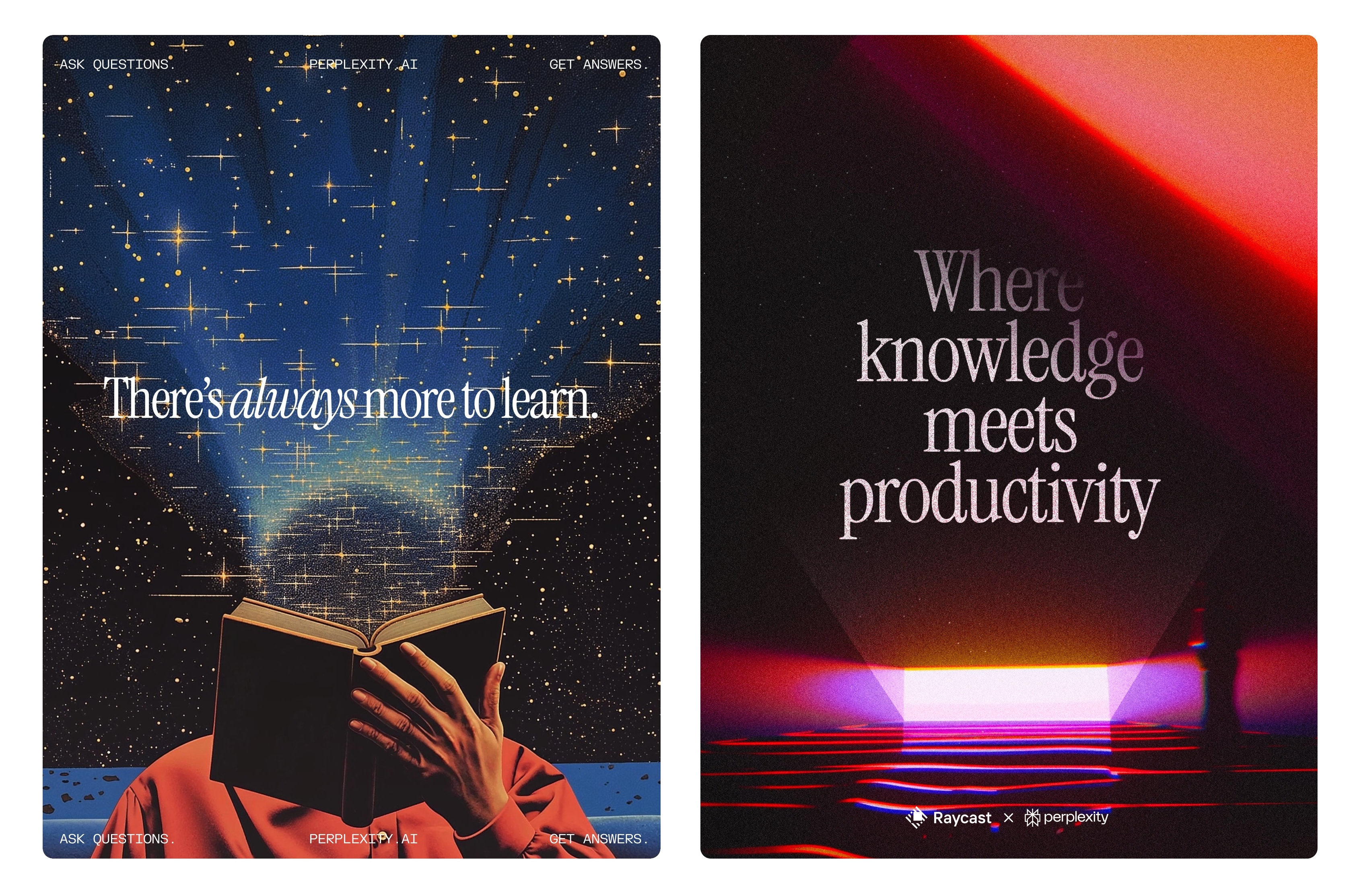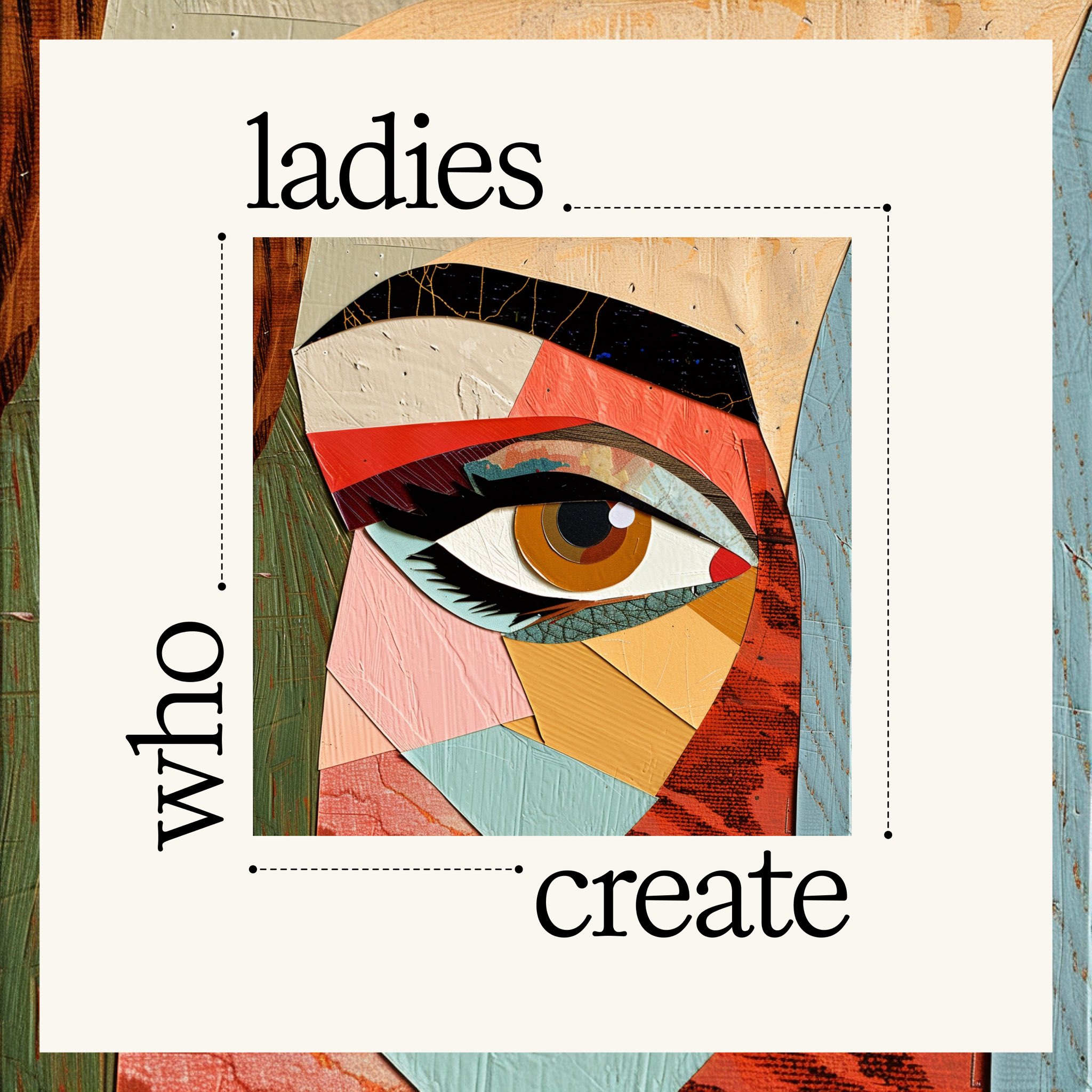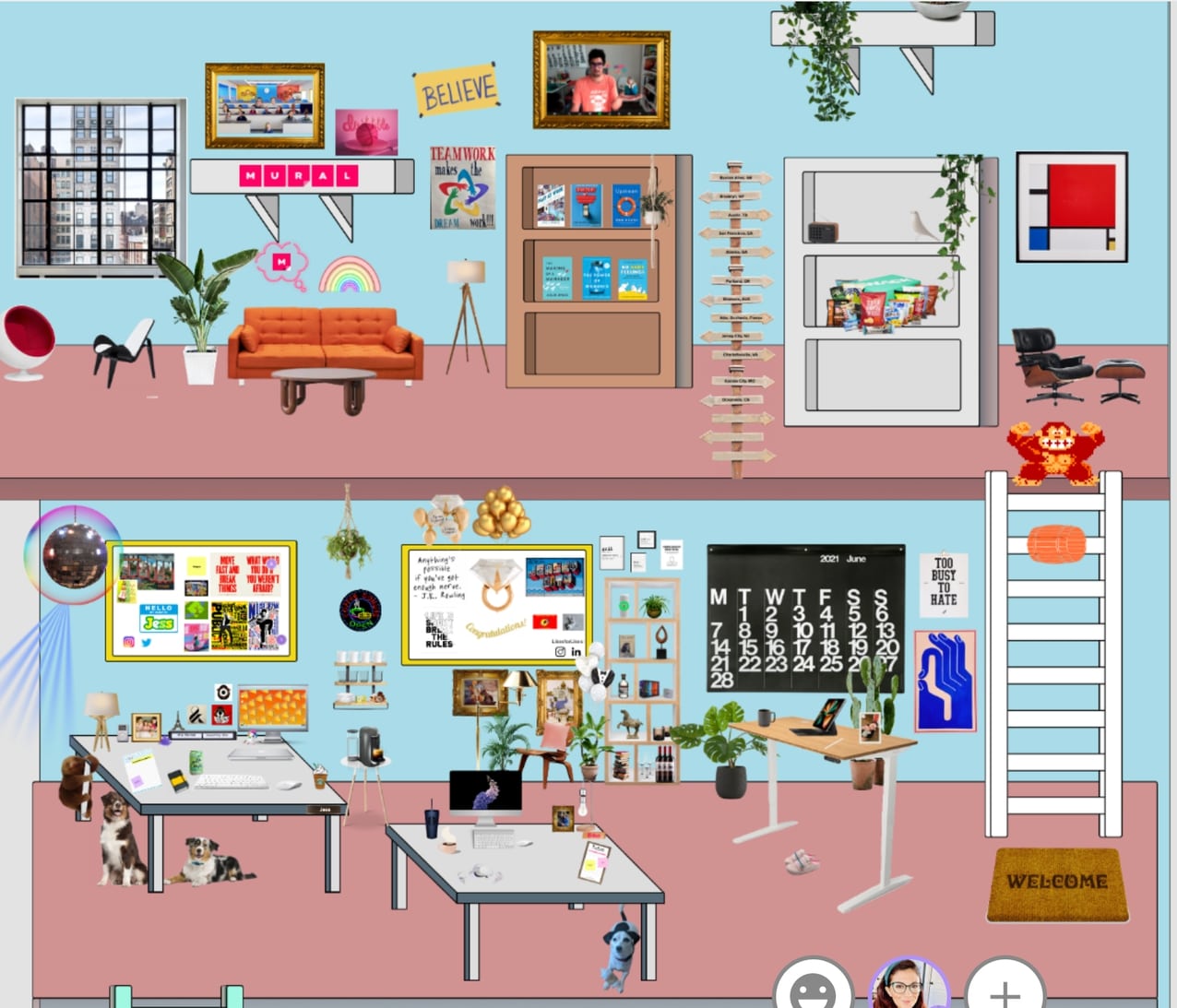Brand Building in the AI Era: Q&A with Jessica Rosenberg
Jessica Rosenberg is a creative leader whose experience goes both deep and broad. Passionate about the power of brand, Jessica has helped build, scale, and nurture creative teams to do the best work of their careers for over 18 years, with stints at notable advertising and tech companies including Crispin Porter & Bogusky, Twitter, Cloudflare, Mural, and Webflow. Today, she’s a Creative Director at Jasper AI and a cohost of the podcast Ladies who Create.
Jessica sat down with us for a virtual AMA (Ask Me Anything) to answer our community’s biggest questions about how to build better branding for AI, tips for navigating a turbulent job market, and how to foster creative collaboration, internally and externally. Keep reading to dive into our Q&A!
Topics covered:
Early stage brand-building
What makes a strong brand in your experience?
A strong brand is the sum of its narrative and a unique, differentiated visual design identity that reflects that narrative. Strong brands build trust with their target customers. Your product may be incredible, but if your website, social presence, and overall brand don't match the strength of your product's capabilities, that won’t spark a sense of trust (or even interest) with customers. My hot take!
How early should companies start working on their branding?
Pre–product-market-fit companies should care a lot about their brand—it’s their most overlooked competitive advantage.
If you’re able to have teams focused on both product and brand, then I highly recommend making the investment—even if it's just one incredibly talented and experienced founding brand designer and a copywriter/strategist to start! That particular duo is so powerful in early brand building, and I don't think many early companies consider bringing them on initially.
Pre–product-market-fit companies should care a lot about their brand—it’s their most overlooked competitive advantage.Jessica Rosenberg
What kind of brand deliverables should very early stage companies focus on?
Here are my core recommendations:
- MVBI (minimum viable brand identity): Logo, color palette, typeface, and approach/POV on illustration or diagram styling. I've seen this work get done in two week sprints.
- Website: A piece of internet real estate where anyone can learn about the company and the value you provide to customers.
- Social media templates: A suite of pre-designed and varied Figma templates that allow early startup teams to quickly generate content for their social media channels.
- Email templates: A few different email template designs—one for in-product notifications, one for new-user onboarding, and one for marketing emails.
- Presentation template: This is a big one for early stage companies, especially those seeking capital.
- Swag: Branded shirts, hats, totes—but ones that people actually want to wear (i.e. don't just slap your logo on them). This is free advertising for your company. We gave out tons of free shirts when I worked at Cloudflare, and by the end of my decade living in the Bay Area, I would see at least a few people out each week wearing our shirts.
Can you share any brand projects that had particularly big outcomes for a business you worked for?
When I was at Cloudflare, we launched our first ever brand campaign. It was bright, bold, and pushed the envelope creatively for an internet security company (which is exactly the type of work I love doing!). We ran the campaign for two months across New York City, San Francisco, and a national digital buy. The most surprising results were that when it came to recruiting in New York and San Francisco, the recruiting teams saw a massive influx in applicants during the campaign run. In interviews, candidates mentioned how much they loved the energy of the campaign and how it made them excited about potentially working at the company.

Can you share recent brand work that you’ve found particularly novel or inspiring?
Yes! A lot recently, actually:
- Perplexity AI: Henry Modisett, Phi Hoang, and the Perplexity team (along with their agency partner Smith & Diction) are not afraid to experiment when it comes to their brand and it shows. They build and share work in public, and seem to get the design audience particularly hyped by what they're making—like this upcoming merch drop. They’re also leveraging the product into their brand activations, which is always a genius move for brands whose product can also be the brand. Take for example their recent podcast where they draw daily content straight from their app's discover feed, and use Eleven Labs to record the VO.
- Mymind: A digital tool that aims to save anything you find on the internet. Their brand is very zen, airy, friendly, and inviting. It was a breath of fresh air for me. Plus, their newsletter is one I open regularly—it's short and I always find value in the inspiration they share. I'm always impressed with brands that surprise and delight. A lot of people think it takes big budgets to do this but all it really takes is a good idea, people internally believing in it, and then actually executing on it.
- Figma's recent custom in-product cursors were so delightful that it felt like every designer on social media wanted to share theirs and scream their excitement from the rooftops. This type of customization is so sticky and has a ton of viral potential. But even more importantly, it makes people smile and brings joy to their day to day. A great example of how brand and product are one and the same.

How do you think about user research when it comes to brand work?
When brand-building from zero, doing rebrands, or brand refreshes, customer conversations are important. I define customers in two ways:
- Internal customers: Colleagues, the leadership team, employees across the company.
- External customers: The customers and users of your product.
It’s important for your brand to resonate with customers, but at the same time, there’s also a confidence in launching a new brand identity without any external customer research. I will say, if you do forgo involving external customers, you must involve the internal ones in some way.
I've been part of brand projects where we didn't share our progress with any external customers but the regular internal involvement helped shaped the output into the strongest representation of the brand and company. I've also been part of projects where customer input along the way was a big part of the process. We listened to qualitative feedback and acted on what we thought made sense. It was challenging because a lot of the reactions were subjective and taste-based, and we didn't have UXR partners to help craft questions that would yield to less subjective answers.
At the end of the day, it's a confidence play. Create the brand you’re super excited about that reflects the company's essence, involve internal customers along your brand-building journey, and make sure the work surpasses the craft bar while reflecting your brand’s unique story—and you'll be delighted at the positive reactions.
Designing for and with AI
How would you start designing a new brand for an AI company?
AI is still so new, so strategy-wise I'd try to first uncover what the business's unique narrative story is before even going into design mode. What’s special about your AI brand? Why should people care? Is there a specific emotion you want your audience to feel when interacting with this brand? Are there brand principles that can help guide the company and the work?
From there, I’d start exploring styles that map to that strategy. Look into design styles that are opposite of what's being used again and again in the industry—elegant serif typefaces? A color palette that’s diverse and bold and nods to innovation, while also being accessible? Just a few ideas and thought starters!
What are your thoughts on all the purple and pink visual language that’s popular among AI brands these days?
There is so much purple and pink right now! I think it's because the space is so new, and evolving so quickly, that it's just become a trend. That and the fact that there is little else to denote AI “magic” of sorts. That being said, there is a HUGE opportunity to break away from the “blurple” style. I am personally craving it, and I think the first AI brand that can show up in a unique and refreshing way will get a ton of positive attention because of it.
How are brand teams exploring and experimenting with AI?
Excellent question, and one that I’ve seen come up a lot lately. I've been experimenting with AI in a few different ways:
- Moodboarding: In addition to the "old" ways of gathering inspiration at the early stages of a project (i.e. Pinterest moodboards, design history books, stepping away from a computer and into the world), I've been leveraging tools like Midjourney and Visual Electric to rapidly come up with visual styles and art direction approaches for design projects. These tools offer really quick ways to get ideas and concepts together in front of a client, and from there we'll create the final output ourselves or with a craft expert, like a professional illustrator.
- Code: I've been a big fan of leveraging ChatGPT to give me JavaScript snippets for things that I can't do myself. The combo of ChatGPT-generated code and tools like Webflow and Framer ("no code" website builders that allow custom code integrations) are really powerful. For example, I created this improv prompt generator site for my improv class in Webflow, but used ChatGPT to generate the JavaScript snippets for the random prompt generation.
- Published image creation: Liz Meyer and I recently launched a podcast called Ladies who Create, and we leveraged Midjourney to aid in the creation of the cover art. It took several rounds of prompting before we landed on a composition we were happy with. We then took the final composition and altered it a bit in Photoshop and Figma, and then had it animated by a motions graphic designer. We leveraged Google reverse image search to ensure it wasn't too close to anything else that existed out in the world. Copyright in the age of visual AI creation is still very undefined, so I recommend treading lightly here if you plan on creating AI-generated imagery for brands or companies, especially past the moodboarding stage.

Fostering a collaborative design team culture
How do you build a positive team culture around shared critiques?
At Webflow, we implemented a crit process that was inclusive and allowed everyone on the brand design team to take turns flexing their facilitation and participation skills. Each week, someone would volunteer to be the facilitator. The facilitator ensured we were staying on time for each project being shared and took notes. After the designer would present their work, we'd go into silent crit mode and populate sticky notes in FigJam with comments and feedback, before recapping this feedback live. After the critique, design managers would then work with the presenting designer to decipher which feedback to take action on, if necessary.
We also had a different ritual that we shared with the product design team once our teams got bigger. Through a shared Slack channel, designers posted the work they planned to bring to their live crits that week. It came with a consistent Slack prompt (i.e. project name, goal, audience, stage, type of feedback they're looking for, tagging people for specific feedback requests) along with the Figma link. This allowed both teams to see what types of work we were all doing, and in an async way. It was a nice low-effort way to be transparent and keep the wider design org looped into our respective projects.

How would you approach building more respect for brand design in a very engineering-heavy culture?
A few things come to mind:
- First, demonstrate brand design’s impact on company objectives. Engineers are often driven by data and results. Share how good design contributes to the bottom line and enhances experiences through customer case studies, website analytics, a/b testing, social sentiment analysis and more. Are there channels in your company’s Slack where teams share wins? This could be a good area to demonstrate how design work can drive results.
- Next, foster collaboration between brand designers and engineers. Engineers are the ones building the product. Brand designers are visually communicating the product’s story. The two sides have a lot of information that can benefit both teams’ purposes. Team fikas, work shares, lunch-and-learns, hack weeks, even simple 1:1s are a great way to connect.
- Launch an open design and creative inspiration Slack channel. I’ve started these types of Slack channels at past companies for anyone in the company to share and enjoy design and creative inspiration. Engineers loved being part of this space and always shared feedback of how they felt included and inspired by what we’d share in there.
Building a sustainable design career
How do you find work-life balance as a designer working in a fast-paced industry?
There isn't one short answer that can work for everyone, unfortunately! However, I've found that identifying what’s most important to you and literally writing it out is a good place to start. From there, identify actions you can take to make sure you are, in fact, able to prioritize those things. Kind of like setting SMART goals for yourself!
For me, being able to make dinner and do the nighttime routine with my family and kids is a priority for me. Here's how I make it happen:
- Communicate with my manager that this is a priority for me, and tell them that at 5:30pm each night I'll be stepping away to do parent things.
- I block it off on my calendar each day of the week, and also communicate it with colleagues so they're aware.
- I set my Slack status as offline once I step away.
- If I, for whatever reason, need to come back online later in the evening to finish something or prep for the following day, I do, and that's fine.
At Webflow, my team and I made "user guides" when we first started there, as a way to communicate our working styles with each other, along with personal boundaries (like having to step away at 5:30pm to be with kids, for example). We pinned these docs to our Slack profiles for any of our colleagues to see and learn how we operate at work as individuals. There are only so many hours in the day, and it requires us as parents to be extremely picky with our time.
Another approach I love and learned early on (from Mia Blume at Design Dept) is the Eisenhower matrix—it's a graph that helps you prioritize your time by urgency and importance. It’s a really great and helpful exercise for everyone to try, both parents and non parents. And especially those folks who find themselves in back-to-back meetings!
With the ways our world is moving today, how can designers future-proof their careers? Which traits and skills will be important?
It depends on where you are in your career journey. I've found that working in-house for many years in both agencies and tech companies has given me a broad set of experiences—something I wouldn't have gotten if I had been a solo creative that entire time. For example, experience in juggling various projects at once, collaborating with different types of specialists, managing clients and relationships. But that's just me, and it's different for everyone. Whether you go independent or in-house, the same characteristics will be as important than ever and will give you that competitive edge. What I think will be important no matter what:
- Finding your voice: Who are you? What makes you unique? How do you market yourself? What's your personal brand? How do you show up in the world and online?
- Your design craft and creative abilities: What does your portfolio of past work look like? How does it demonstrate your talents? How do you present your work online? Your website should be treated like a design project in and of itself.
- Your communication and presentation skills: Know how to present yourself well and consider how to tailor your communication to different audiences.
- Your network: Grow and nurture it.
It's a secret and powerful weapon if you lean in, experiment, and start not caring what other people think of what you put out there.Jessica Rosenberg, Creative Director at Jasper AI
Any advice for navigating today’s turbulent job market?
This job market is really tough. A few recommendations:
- Build your network. Reach out to people—other designers, leaders, those you admire in the industry—and ask them if they'd be open to a 30min Zoom call, with no expectations other than to connect. A lot of the jobs I've gotten in my career stemmed from a connection within my network, or at least helped me get a foot in the door. There are also resources like ADPlist where you can book calls with experienced "mentors" in the design space.
- Ask for portfolio/website/resume reviews: This is something I've been doing a lot via ADPlist for mentees and I think it really helps those going through the interview process. Getting honest feedback from those who have been or are design hiring managers is priceless.
- Find your voice, and don't be afraid to lean into social media: Self promotion can feel scary, but it can really work if you’re consistent with it. And it doesn't even have to be in the form of literally promoting yourself or your work directly. You can share helpful resources on LinkedIn and Twitter. Get your voice, thoughts, and opinions out there, interact with other design professionals on social media, share other work you like. It's a secret and powerful weapon if you lean in, experiment, and start not caring what other people think of what you put out there.